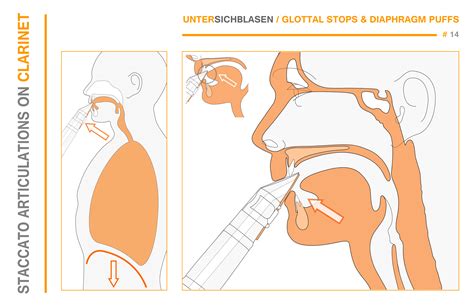Clarinet Articulation: The Foundation of Great Playing
Clarinet articulation—the way you start and stop notes—is fundamental to good clarinet playing. It's not just about cleanly separating notes; it's about shaping phrases, conveying emotion, and achieving a polished, professional sound. Mastering clarinet articulation transforms your playing from technically proficient to truly expressive. This article will delve into the techniques and nuances that elevate your articulation from good to great.
What is Clarinet Articulation?
Clarinet articulation encompasses all the techniques used to begin and end notes clearly and precisely. This goes beyond simply playing notes consecutively; it involves controlling the tone, volume, and attack of each note to create a musical and stylistic effect. Effective articulation is the bedrock of musical phrasing and expression, allowing the clarinet player to convey a wide range of emotions and interpretations.
The Different Types of Clarinet Articulation
Several techniques contribute to mastering clarinet articulation:
1. Tongue Articulation: The Most Common Method
The most prevalent method uses the tongue to initiate notes. There are several variations:
- "T" Articulation: The most common, creating a crisp, clean attack. The tongue strikes the reed decisively, producing a clear sound. Practice saying "too" repeatedly to feel the right motion.
- "D" Articulation: Produces a softer, more legato sound. The tongue touches the reed more gently, creating a smoother transition between notes. Practice saying "doo" repeatedly.
- "K" Articulation: Used for staccato articulation and short, detached notes. The tongue makes a more forceful and abrupt contact with the reed.
The key is consistency. Experiment with each articulation type to understand the subtle differences in sound production. Finding the articulation that best suits your style and the musical context is crucial.
2. Breath Articulation: For a Smooth and Connected Sound
Breath articulation utilizes the air stream to start notes. It's less common for initiating individual notes, but essential for achieving a smooth legato line, especially in long phrases or slow melodies. By controlling the breath, you can create a seamless connection between notes. This requires strong breath support and control.
3. Finger Articulation: A Less Common Technique
Finger articulation involves quickly lifting a finger to create a staccato effect. It's less common than tongue or breath articulation but can be useful in certain musical passages.
Improving Your Clarinet Articulation: Practice Techniques
Consistent practice is key to improving your clarinet articulation. Here are some effective exercises:
Scales and Arpeggios:
Practice scales and arpeggios using different articulation types (T, D, K). Focus on achieving evenness and clarity in each note's attack. Start slowly and gradually increase speed.
Tonguing Exercises:
Dedicated tonguing exercises are essential. Start with simple rhythmic patterns, like eighth notes and sixteenth notes, and gradually increase complexity. Pay close attention to the consistency of your tongue's movement.
Metronome Work:
Using a metronome is crucial for developing precision and timing. It will help you maintain evenness and consistency in your articulation, regardless of the tempo.
Common Problems and How to Solve Them
Many clarinet players struggle with specific articulation challenges:
Uneven Articulation: Some notes sound louder or softer than others.
Solution: Focus on consistent breath support and tongue placement. Practice slowly, paying attention to each note's attack.
Muting: Notes sound muffled or unclear.
Solution: Check your embouchure, ensure proper reed placement, and practice with a clear and focused tone.
Double Tonguing: Difficulty tonguing quickly.
Solution: Practice the "ta-ka" double-tonguing exercise. Gradually build speed and consistency, focusing on relaxation and coordination.
The Role of Articulation in Musical Expression
Articulation is not merely a technical skill; it's a powerful tool for musical expression. The way you articulate notes significantly impacts the overall feel and character of the music. Experiment with different articulation styles to explore the emotional possibilities.
Conclusion: Mastering the Fundamentals
Mastering clarinet articulation is a journey, not a destination. Consistent practice, focused attention to detail, and a willingness to experiment will lead to significant improvement. By focusing on the different articulation techniques and addressing common challenges, you can develop a refined and expressive clarinet sound. Remember, strong articulation is the foundation upon which great clarinet playing is built.

